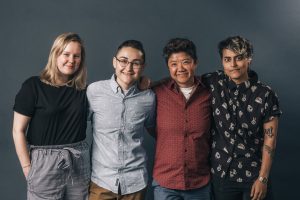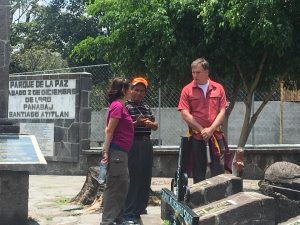Cultural Highlights: Communicating with Co-Cultures
Welcome to the Cultural Highlight Section

Currently, this unit helps students better understand a variety of co-cultures such as LGBTQ+ community, Asian Americans, Persons with Disabilities, and members of the Latinx community. Additionally, each guest experiences unique intersections of co-cultures.
As this Open Education Resource (OER) grows to become a textbook, more co-cultures will be added in this section. Each semester, students of Intercultural Communication choose at least one co-culture or culture to examine closely. Individuals volunteer their stories formally through the Human Library as well as more informally in one-on-one meetings with students. Some folks attend our classroom settings and others are available via online conferencing. We hope that this Unit will help students better understand co-cultures (gain knowledge), thereby gaining confidence in their interviews and interactions with individuals from different co-cultures. Conversely, we also desire that the students will use what they learn as a mirror to hold so that they may see themselves in these case studies – seeing with great detail how one is similar/different as a member or non-member of the community under consideration. Please feel free to share your insight with Lori.Halverson-Wente@rctc.edu. We are seeking more videos, more resources, more site visit ideas.
Samovar, et. al, (2017) stress that one needs a combination of skills, knowledge, and motivation to adequately increase student intercultural communication competency. The following case studies will, in part, allow one to acquire and increase understanding of Samovar’s identified skills through learning more about the stories and lives of others with the goal of deepening one’s own “intercultural curiosity.” Reading this section, trying out the links to additional activities, and watching the videos should provide you with more knowledge, which, hopefully, will prod you to try out your skills and spur you to create your own conversations with folks from different and new co-cultures and cultures.
Purpose of Case Studies

Each subsequent chapter study will highlight and illuminate the co-culture under consideration, including a brief description of the co-culture highlighting historic and current considerations individuals of this given co-culture face, embedding relevant videos to watch, and suggesting links to learn more. Additionally, as this Open Education Resource text is written to assist you with your homework for an Intercultural Communication class, sample interview questions, and notable connections to class content for homework, essay work, or Think Piece completion will be provided. Further, key contact organizations, contact people, and potential site visit locations near Rochester, MN, are listed. If you are not from Southeast Minnesota, these ideas may still provide useful contacts. Your instructor will use these assignments or other follow-up materials.
In the case studies, consider the relationship between the dominant culture and co-cultures. Dominant culture can be defined as, “one whose values, language, and ways of behaving are imposed on a subordinate [co-]culture or cultures through economic or political power. This may be achieved through legal or political suppression of other sets of values and patterns of behaviour, or by monopolizing the media of communication” (Oxford Reference, 2020). Co-cultures are “groups or social communities exhibiting perceptions, values, beliefs, communicative behaviors, and social practices that are sufficiently different as to distinguish them from other groups and communities and from the dominant culture” (Samovar, 2017, p. 9).

